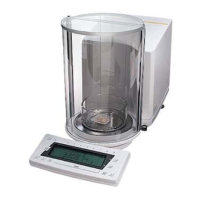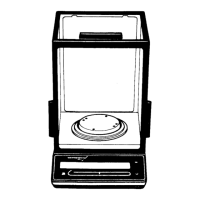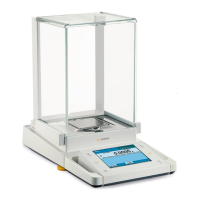0–0
Contents
Page
General Views of the Balances:
MC 210 S, MC 210 P and
MC 410 S (-0CE) 1– 0
General Views of the Balances
MC 5 (-0CE) and SC 2 (-0CE) 1– 2
Warranty 1– 4
Storage and Shipping Conditions 1– 4
Transporting the Balance 1– 5
Equipment Supplied 1– 7
Installation Instructions 1– 8
Using Verified Balances
Approved as Legal Measuring
Instruments in the EU 1– 9
Getting Started 1–10
General Instructions for
“Analytical Weighing” 1–16
Weighing Electrostatically
Charged Samples
and Containers 1–16
Weighing Magnetic
or Magnetizable Samples 1–17
General Instructions for Handling
Samples and Containers 1–18
Operating the Balance 1–19
Balance Display 1–19
Turning the Display On and Off 1–20
Self-Test 1–20
Opening and Closing the
Draft Shield 1–21
Simple Weighing 1–26
Taring 1–26
Weighing Range Structure 1–27
Weighing in the IQ-Mode 1–28
Mass Unit Conversion by Toggling
1–29
Displaying the Balance Model
and the Serial Number 1–29
Page
Calibration/Adjustment and
Linearization Functions 1–30
Data Interface 1–36
Below-Balance Weighing 1–37
Fastening an Antitheft
Locking Device 1–37
Troubleshooting Guide 1–38
Care and Maintenance 1–40
Servicing 1–40
Cleaning the Balance Housing 1–40
Cleaning the Weighing Chamber 1–40
Safety Precautions 1–41
Balance Operating Menu 2– 1
Weighing in Three Ranges
on Standard Balances 2– 7
Weighing in Two Ranges
on Verified Balances Approved
for Use as Legal
Measuring Instruments 2–10
Display Modes for
Standard Balances 2–11
Display Modes for Verified
Balances Approved for Use
As Legal Measuring Instruments 2–13
Calibration Functions on
Standard Balances 2–14
Calibration Functions on Verified
Balances Approved for Use
as Legal Measuring Instruments 2–16
Utilities for Printouts
or Data Transfer 2–18
Additional Functions 2–21
ISO/GLP-compliant Printout
or Record 2–25
Setting the ID No./Date/Time 2–30

